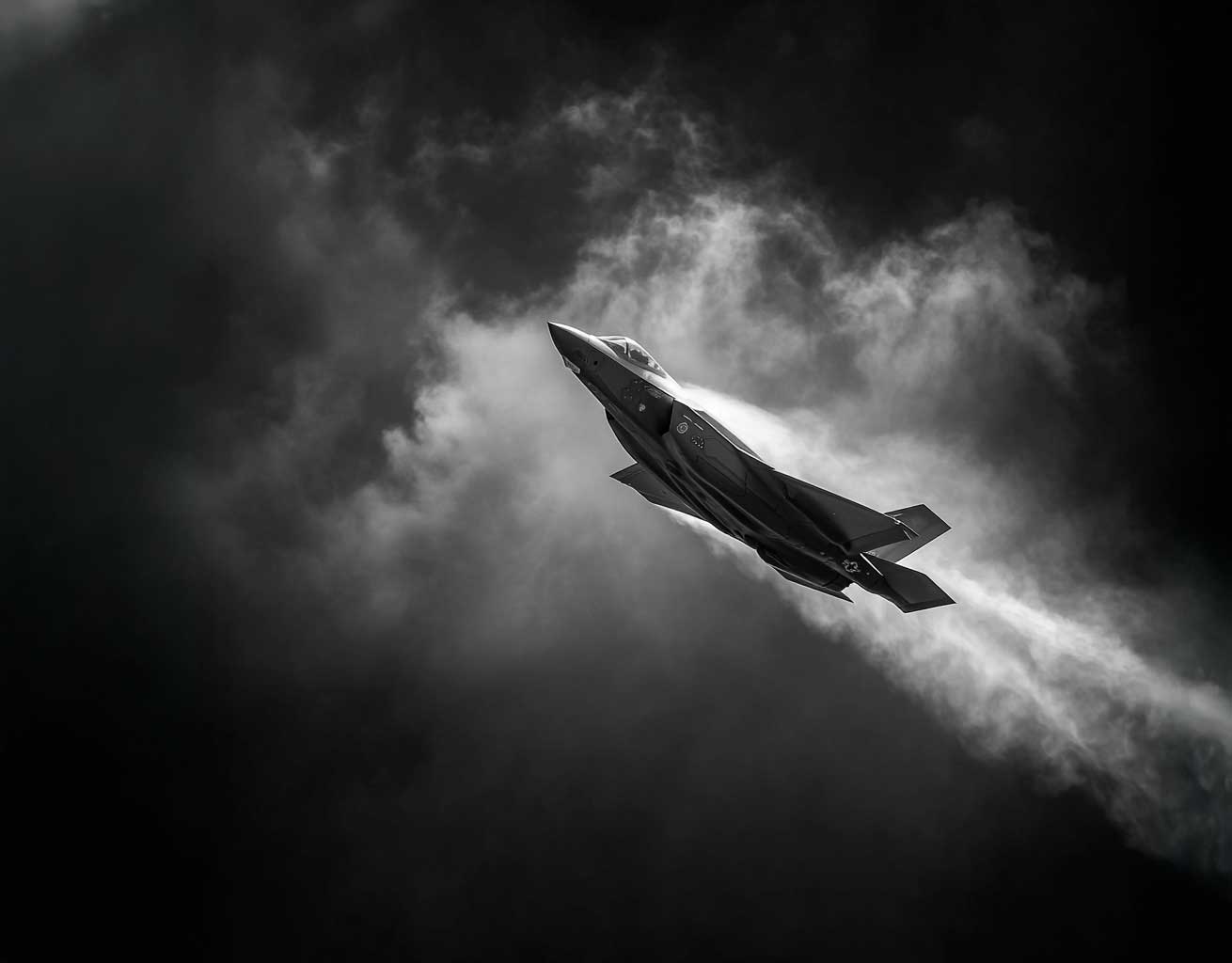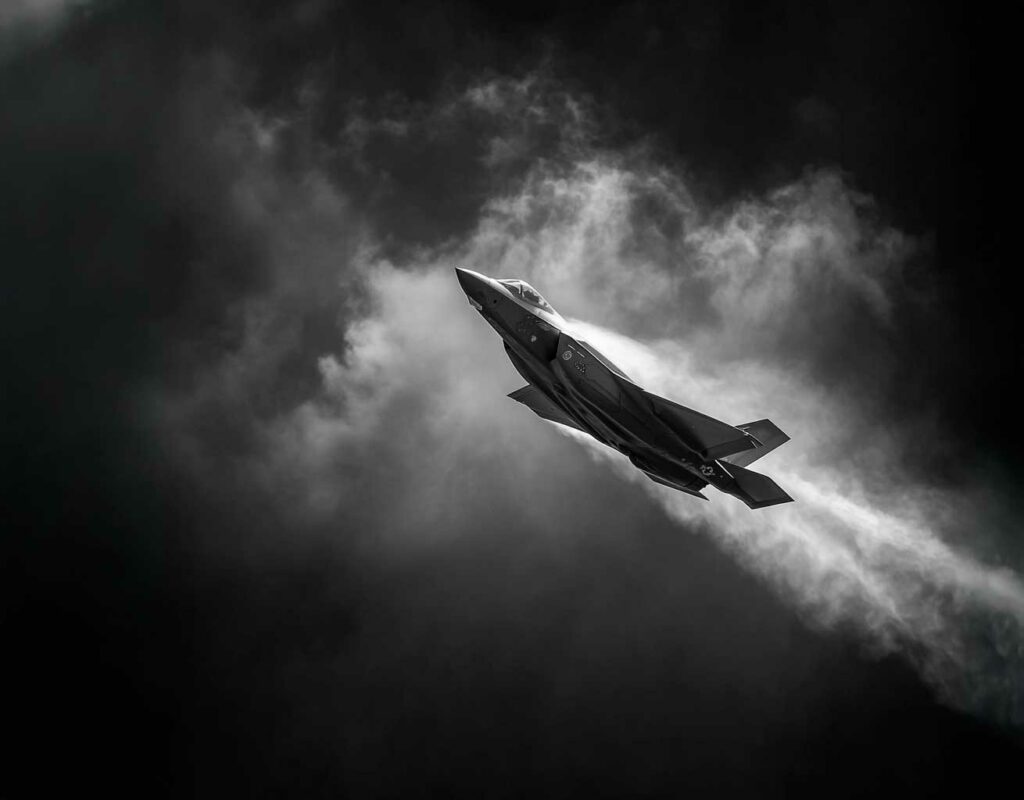
16 Jul F-35 program delays threaten RAF combat readiness
The UK’s £71 billion F-35 program suffers from delays, pilot and engineer shortages, and missing weapons integration, risking RAF and NATO combat effectiveness.
Executive Summary
The British F-35 Lightning program, designed to equip the Royal Air Force and Royal Navy with a new generation of stealth fighter jets, is facing major setbacks. With £11 billion already spent, only 37 aircraft are in active service as of June 2025. A recent review by the National Audit Office highlights serious deficiencies: delivery delays, personnel shortages, maintenance issues, and postponed integration of critical weapon systems. Mission availability is far below expected levels, and pilot flying hours have been reduced due to limited aircraft readiness. The program, projected to cost £71 billion in total, aims to form two operational squadrons by the end of 2025. Meanwhile, the UK has announced the purchase of 12 F-35A variants to support NATO’s nuclear deterrence strategy. Despite the advanced capabilities of the F-35, including stealth and sensor fusion, the return on investment remains limited. The challenges are both technical and structural, with implications for national and alliance security.
The central role of the F-35 in UK air combat strategy
The F-35 Lightning is intended to be the cornerstone of British airpower for the coming decades. It combines stealth, data fusion, and long-range sensing in a single multirole platform. The variant chosen primarily by the United Kingdom is the F-35B, which is capable of short takeoff and vertical landing. This makes it suitable for deployment both on land and from aircraft carriers, including the HMS Queen Elizabeth and HMS Prince of Wales. The F-35B replaces the retired Harrier and is expected to operate jointly under Royal Navy and Royal Air Force command structures.
The F-35 is not just a new aircraft. It represents a shift in how air warfare is conducted. Thanks to its powerful sensor suite, it can act as a node within a wider network, gathering data and transmitting it in real time to other assets. This capability is critical in modern conflict environments where speed of information is as vital as firepower. However, these theoretical advantages are currently undermined by shortfalls in practical deployment.
Financial scale and acquisition status of the program
The full cost of the F-35 program to the UK is estimated at £71 billion. This figure includes not only the purchase of aircraft but also infrastructure, training, support, weapons integration, and lifecycle costs. To date, £11 billion has been committed, but only 38 aircraft have been delivered, with one non-operational, leaving 37 active in the fleet. This is well below the capability needed to field two fully operational squadrons, originally planned for several years ago.
The UK has formally committed to acquiring 48 F-35B aircraft, with long-term ambitions to procure up to 138. This target is under review and unlikely to be met under current conditions. Adding complexity, the Ministry of Defence recently announced the acquisition of 12 F-35A variants, which differ structurally from the F-35B and require separate logistical and training support. The F-35A will be assigned to NATO’s nuclear sharing mission and cannot operate from carriers.
Pilot and engineer shortages threaten combat capability
A major issue identified by auditors is the insufficient number of qualified fighter pilots. Fewer than required are trained to operate the F-35, and many of those who are qualified receive limited flying time. Average monthly flying hours per pilot have fallen from 10 to 7.5, due to low aircraft availability and maintenance limitations. This restricts the ability to maintain proficiency and combat readiness.
Equally problematic is the shortage of engineers and support technicians. The F-35 demands a new type of maintenance profile, including low-observable coating management, software updates, and digital diagnostics. Many RAF personnel are still undergoing conversion training, and the support system is not yet fully sovereign. This means the UK remains partly dependent on US-based infrastructure and timelines, a concern for national autonomy in conflict scenarios.
Weapon integration delays reduce operational flexibility
The aircraft currently lacks full integration of key British-developed munitions. The Meteor beyond-visual-range missile and the SPEAR 3 stand-off weapon were expected to be operational on the F-35 by 2024. These capabilities have now been postponed to the early 2030s. Until then, the only precision-strike weapon available is the Paveway IV laser-guided bomb, which has a limited range and exposes the aircraft to greater risk in contested environments.
Interim solutions using American-made Small Diameter Bombs are being considered, but no firm funding decisions have been made. The inability to deliver long-range strike capability from a stealth fighter weakens one of the main justifications for the program’s cost and complexity. This delay also affects the Royal Navy’s ability to project force from sea, as the aircraft carriers depend on the F-35 for strike missions.
Fleet readiness and mission availability remain below targets
Only around half of the delivered aircraft are mission-capable at any given time. Full mission-capable rates, which include advanced electronic systems, remain significantly lower. These readiness rates fall short of both UK internal benchmarks and allied standards. Maintenance backlogs, a global shortage of spare parts, and delays in software upgrades are all contributing factors.
The aircraft relies on a digital logistics system known as ALIS, which has faced repeated issues. Transition to a new system, ODIN, is underway but not yet complete. This situation complicates predictive maintenance and slows repair cycles. With only 37 active jets, any drop in availability has a direct and immediate effect on squadron performance and pilot training.
Strategic implications for NATO and national defence
The United Kingdom has built much of its recent defence posture around the idea of high readiness and interoperability with allied forces. The F-35 program is central to both. However, delays, incomplete capabilities, and personnel shortages undermine this strategic positioning. The inclusion of 12 F-35A aircraft for NATO’s nuclear sharing commitment reflects the UK’s growing emphasis on alliance responsibilities, but also introduces logistical divergence.
The ability to deploy a full Carrier Strike Group with a credible number of F-35s remains uncertain. Earlier plans aimed for 24 jets available for maritime deployment by 2025. Current numbers and readiness metrics make that target difficult to meet. This shortfall limits deterrence and weakens the UK’s expeditionary credibility in both the Indo-Pacific and Euro-Atlantic theatres.
The F-35 program, while technologically impressive, has yet to deliver the expected operational output for the Royal Air Force. The aircraft’s full potential in stealth, information dominance, and multi-role capability remains untapped due to structural and logistical challenges. Addressing the gaps in fighter pilot availability, engineering support, and weapons integration is essential to convert financial investment into combat power. As the program moves toward its 2025 milestones, the focus must shift from acquisition to real-world effectiveness, or the UK risks having one of the most advanced fleets of fighter jets—without the means to use them to their full capacity.

